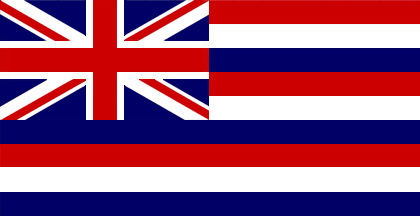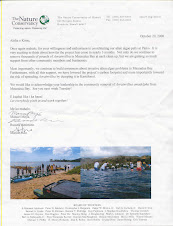Friday, July 10, 2009
Desecration at Hawea Heiau
This type of careless action, disregard and stupidity by certain developers and land owners who have no regard for the culture of Hawai'i or it's sacred places seems to continue all for the sake of greed and money. To them, Hawai'i is nothing more than a commodity in which they can rake in there speculative dollars and run away with it back to the mainland or wherever they come from.
The people of Hawai'i obviously cannot rely on the agencies or bureaucracies to stay on top of these types of violations or stop it. Only a vigilant community can put an end to this type of sickening behavior.
Kapuna Spring & Haiku Stream




Mahalo to Mahi La Pierre for showing us around lands mauka in Haiku on Monday, June 22. Pictures above from bottom to top are Haiku stream and Kapuna Spring. Kapuna spring is a spring where Kane and Kanaloa are said to have obtained their drinking water (Sites of Oahu - Sterling & Summers - pp 201).
Crystal clear fresh water still gushes from the ground near the spring in which you can reach down with cupped hands and still drink the water right from the ground. Air bubbles are visible in Kapuna spring in the top picture. No doubt, there were many springs like this in the Maunalua area in days gone by which have since been covered up by development.
Loko I'a o Kanewai







Pictures above from bottom to top show 'auwai entrance to the Loko I'a o Kanewai (Kanewai Fish Pond) from Paiko Lagoon, makaha gate area at the mid-point of the 'auwai and 'auwai leading into Kanewai. The length of the 'auwai running between Paiko Lagoon and Kanewai pond I would guess is approx. 40 to 50 yards.
Thursday, July 9, 2009
Native Plant Restoration at Paiko Lagoon




Students & volunteers worked hard Saturday, June 20th at Paiko Wildlife Sanctuary under the supervision of the State Division of Forestry and Wildlife. Invasive non-native plants are being cleared from the area (above pictures) and native species are in turn being planted (below pictures). This is an on-going project and future work dates are planned.


$3.4 Million is Awarded for Maunalua Bay Project
It is with much excitement that I announce to you that TNC's proposed Maunalua Bay Reef Restoration project has been awarded $3.4 million by NOAA's Community-based Restoration Program under the American Recovery and Reinvestment Act of 2009 (aka economic stimulus funding).
Through this 2-year award, this project will create an estimated 73 new full- and part-time jobs in Hawai‘i, removing the invasive alien algae Avrainvillea amadelpha (mud weed) as the critical first step towards restoring coral reef and seagrass habitat in Maunalua Bay. It is a distinct honor for TNC to have been requested locally to serve as the lead on this project, which we look forward to successful implementation on in partnership with Mālama Maunalua, TNC’s long-time local community conservation partner in the Bay.
The project is a scaling up of three years of volunteer efforts that have successfully removed more than 25 tons of invasive algae from
This award is one of several that have been made to the Conservancy for national coastal habitat restoration efforts that also create jobs. These successful TNC awards have been selected among intense national competition: over 800 proposals were submitted requesting three billion dollars in funding from only $170 million available.
This is a highly unusual project for The Nature Conservancy, as this funding does not go to support our current projects, but creates a new, direct, community-based project that TNC has agreed to manage. TNC will have one new staff person to oversee the project, and a minimal amount of the funding will cover TNC marine support and project administration. We welcome this opportunity because it is good for both the economy and the environment.
We believe that there is no better investment in our State than to improve the health of our near shore ocean, which is a source of food, recreation, and income for many. We consider this project to be among our highest priority conservation efforts over the next two years, and we are committed to see it through to its successful completion. Few conservation projects will ever receive the extraordinary level of national visibility and attention that this project will receive. Our commitment to this work reflects not only our belief in achieving lasting conservation impact through local partnerships with public support, but also the role of applied science in making management decisions and taking future conservation action. In particular, we are excited about the opportunity for this project to clearly demonstrate the direct connection between Hawai‘i’s economic and environmental health.
The writing and submission of this award proposal was a true team effort, with members from our marine and terrestrial teams, our financial management team, and our administrative leadership all contributing on what has been reported back to us by NOAA staff as among the very best proposals that were submitted nationally. I congratulate you all on this significant team achievement.
Sincerely,
Congratulations all volunteers, community members, residents and agencies involved!!! Without all your dedication and hard work over the last year, this would not have been possible.








